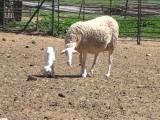
|
Manchega SheepThe Manchega sheep comes from the Entrefino breed and has a double production use: milk and sheepmeat. Among this breed, there are two accepted varieties: black and white. The latter one makes up more than 90% of the animals. The average milk production is 100 liters (26.4 gallons) per animal a year, being markedly seasonal during the months of April, May and June. |

|
Manx Loaghtan SheepThe Manx Loaghtan is found on the Isle of Man off the coast of Great Britain. It is member of the Northern Short-tailed group, similar to the Hebridean, but slightly larger. It's wool is chocolate brown with paler tips. The Manx Loaghtan is descended from the primitive sheep once found throughout Scotland and the coastal islands of Britain. |

|
Masham SheepMasham sheep have been bred for over a centry on the hill farms in the Northern Counties of England. They are produced by crossing a Teeswater ram onto either a Dalesbred or Swaledale ewe, both hardy hill breeds. |
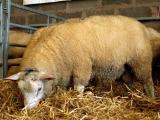
|
Meatlinc SheepThe Meatlinc is a British breed, in the Terminal Sire category, developed from a breeding program originated by Henry Fell in the early 1960’s.Originally a mixture of chosen individuals from five breeds, two British and three French, the Meatlinc evolved as a result of many years of rigorous and disciplined selection based on performance recording carried out under strictly commercial conditions. |
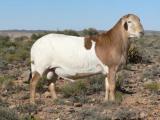
|
Meatmaster SheepIn the early 1990's, determined to utilize the advantages of the indigenous fat-tailed hair breeds and realizing the huge gap between the fat-tailed breeds and the well-muscled British and European breeds and the need for a truly good pure hair breed with good meat qualities, a group of South African farmers decided to develop a composite breed. |
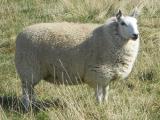
|
Miniature Cheviot SheepCheviot sheep originated in the Cheviot Hills between England and Scotland. They were introduced to the U.S. in 1838. Border Cheviots are small, hardy sheep that spend their lives on the moors. In the U.S., they have become larger than their ancestors from the UK, so the Brecknock Hill Miniature Cheviot registry was formed to preserve the original size. The registry recently dropped "Brecknock Hill" from its name to differentiate American Miniature Cheviots from the Brecknock Hill Cheviots that originated in Wales and are slightly different. |

|
Mirror SheepThe Mirror Sheep has a characteristic head design. Besides its otherwise white color, it has black eye marks, black ear points, and a black nostril. A medium-sized sheep, Mirror Sheep are undemanding compared to other sheep. |

|
Montadale SheepThe Montadale was developed in the United States from Cheviot and Columbia crosses. E.H. Mattingly, a well-known commercial lamb buyer is given credit for developing the breed. His idea was to bring together the qualities of big western-white faced sheep and the popular mutton characteristics of Midwestern sheep. His result was a good meat type, dual- purpose animal with the head and legs free of wool and with the stylish appearance and agile body of the Cheviot. |
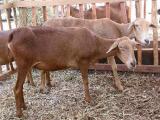
|
Morada Nova SheepThe Morada Nova comes from northeast Brazil and is probably of African origin. It may also be related to a Portugal breed called Bordaleiro. The breed originated from selection of individuals of the Brazilian Woolless. Both sexes are polled. |
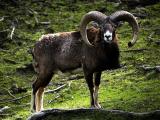
|
Mouflon SheepThe Mouflon is thought to be one of the two ancestors for all modern sheep breeds. It is red-brown with a dark back-stripe, light colored saddle patch and underparts. The males are horned and the females are horned or polled. |